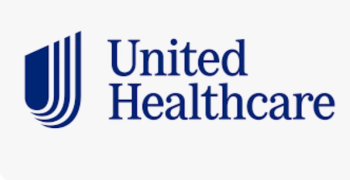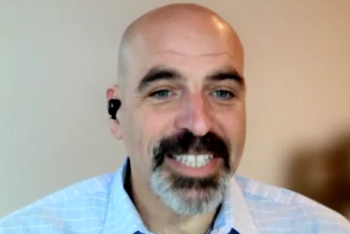
Reinventing the Healthcare Workplace: Futurizing the Operating Model for Human Capital Management
Many leaders in healthcare would agree the healthcare sector has been operating in crisis mode for more than two straight years.
The past few years have had a profound effect on the healthcare industry, especially its
It’s time to set things right.
To reliably maintain capability and support future care innovation, managed health systems must review the dynamics of the current workplace and the ongoing evolution of healthcare delivery. Major priorities for modern human resources strategy center on:
- Reinventing the work
- Reinventing the workforce
- Reinventing the experience
Reinventing the work calls for focusing on process optimization and leveraging technology to improve efficiency, reducing friction and frustration. Reinventing the workforce involves refocusing recruitment strategy, leveraging and integrating remote capabilities, addressing inequalities in positions and pay, and retaining top employees. Finally, reinventing the experience requires engaging employees, providing growth and learning opportunities, and alleviating stress. Let’s dig into the details:
Reinventing the work
Organizations need to rethink how employees do their jobs. We’ve all quickly adopted a range of remote work capabilities, for example. But in many cases we’re still dependent on ad hoc changes to workflow enacted under duress during initial pandemic response. Just because something works well-enough in an emergency doesn’t mean it should become standard practice.
Revisit processes to ensure you’re making efficient use of technology — and staff. How your business processes function determines the cost and outcome of your work. Since many processes are continuous, small improvements can add up to huge benefits. Focus attention on processes with the following characteristics:
- executed often
- cost more than best practice
- impact user/customer satisfaction
Performance and current process maturity can be baselined, employing tools such as
Organizations should address how to facilitate “work from anywhere” capabilities, including as much self-service as possible. For example, if your core human resource technology solution is more than five years old, you probably have opportunities to upgrade and acquire a host of new features. If add-on HR solutions are in place (e.g., HealthcareSource, SuccessFactors), you should review integration capabilities against your implementation. It is highly likely your various vendor solutions are not integrated, creating inefficiencies and frustration for recruits, employees and managers alike. Reinventing the workforce
Remote work, digitalization, talent shortages, and high burnout statistics have changed the dynamics of healthcare recruiting and hiring. Future state operating models must fundamentally synthesize the impact of these changes with an actionable course of responsive measures. That may sound nebulous, but it can be made practical with the right key performance indicators (KPIs).
For a midsized healthcare organization, for example, an ideal HCM operating model might feature:
- Agile recruiting, with a pipeline of candidates available for hire as needed within ten days, and a cost-per-hire under $750
- 0–5% unplanned turnover and ~80% highly satisfied employees
- HR department efficiency tied to best practice of 250+ employees per HR staff member
- Succession planning and training plans linked and automated
- Automated and efficient annual performance review processes linked to compensation for pay-for-performance plans
- Employees and managers digitally enabled with self-service resources
- 100% digital human resource documentation (no paper files)
- Support for flexible compensation and benefits plans, allowing the organization to adapt to evolving recruiting demands and retention efforts
An ideal operating plan identifies strategic goals and evaluates systems and processes, then identifies the priorities for the next 18–36 months based on KPIs such as those listed above. Priorities include areas where work is highly manual or paper-based, and sourcing creative solutions for roles with high turnover.
Questions that help frame plan development might include:
- How do we recruit and retain the talent we need?
- Which processes need to be or can be streamlined?
- How can we empower our managers and staff with easy-to-access, real-time, meaningful, and actionable data?
- What technology is required?
- Do our processes support sustainable productivity metrics, enable remote workers, and integrate across systems and workflows?
- How are we provisioning emerging service areas?
Reinventing the experience
There’s no understating the devastating toll of the pandemic on the healthcare workforce. There are now simply
- Creating a culture of engagement
- Expanding growth and learning opportunities
- Addressing stress management
Two of the most important aspects of work for employees are a
Supplying tools to equip managers with accurate and timely information about the state of employee engagement is crucial. This metric should be tracked at the organization, group, and individual levels. Traditionally accomplished with annual surveys, leading organizations conduct sample polls each month, and solicit more comprehensive employee feedback several times a year with tools such as Glint or Qualtrics.
The intent is not to over-survey the staff, but to keep a pulse on organizational sentiment and provide employees with a continuous venue to voice concerns or suggest improvements. It enhances situational awareness for the entire organization and supplies employees with a sense of agency in their work.
Presenting growth and learning opportunities also increases employee engagement, and supports the bottom line by building internal skill sets to preemptively curb
Career development may require you to rethink the entire organizational structure. Growth and learning strategy involves more than making classes available. Best practice is to clearly identify each position’s specific requirements and learning/certification support for qualification, and make it available for those who wish to hone expertise, or advance, or pivot to new roles.
Perhaps above all other factors, persistent stress hinders the healthcare employee experience. There are numerous changes an organization can implement to help employees manage stress (e.g., mental health services, flexible time off,
Another way to make a huge impact on employee stress is by reducing administrative burden and simplifying the work environment with upgraded technology and automation. But you must also ensure your overall operational model isn’t skewed toward crisis or survival mode. That may mean it’s time to recalibrate roles, compensation, and workload expectations to suit today’s environment (and not that of 2020).
The goal is to establish a sustainable vision for human capital management that supports the work, the workforce, and the employee experience — and an operating model that’s fit for the future.
Tim Webb is senior Healthcare IT Consultant at
Newsletter
Get the latest industry news, event updates, and more from Managed healthcare Executive.




















































